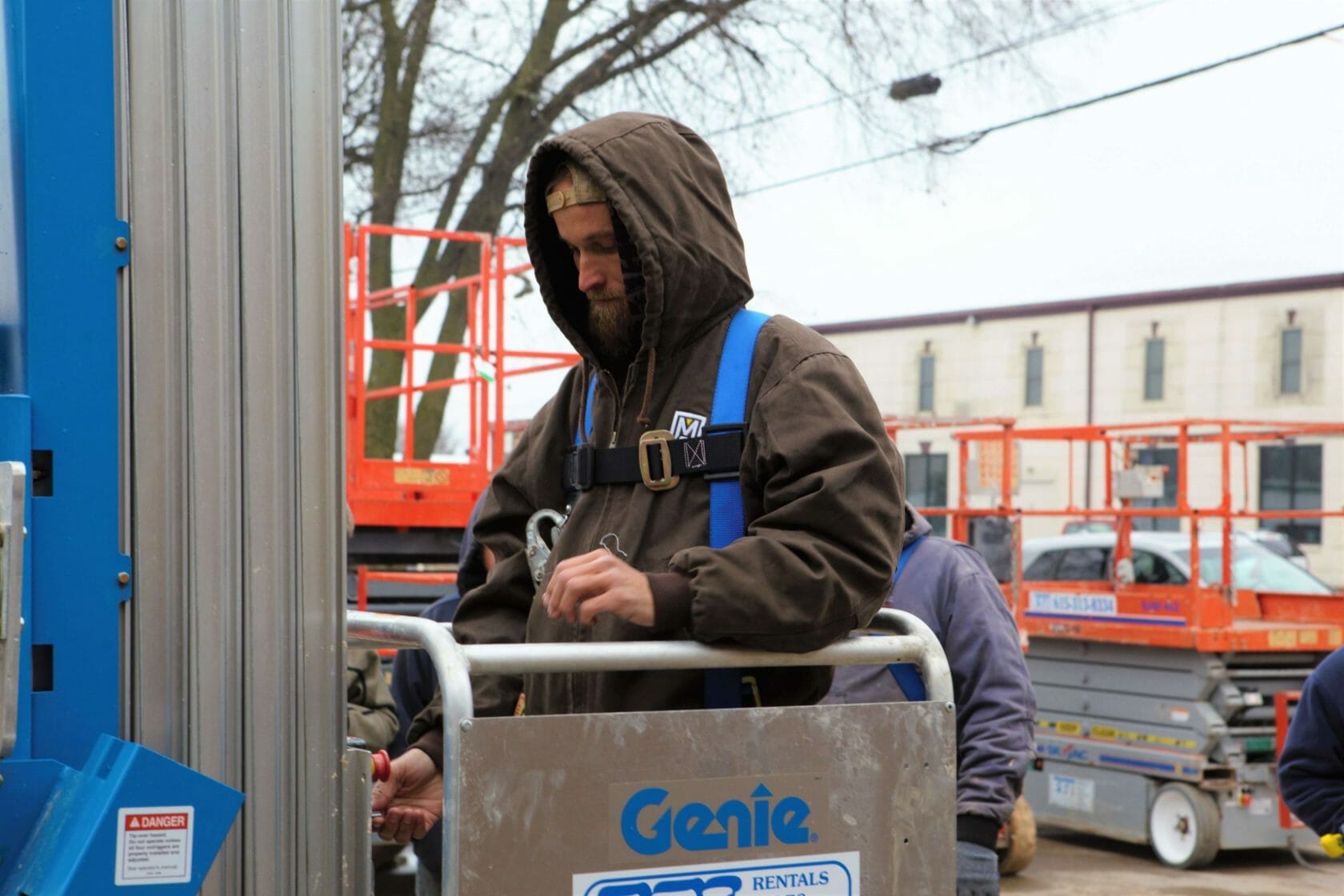Roofing can be a dangerous profession without the appropriate safety precautions. Workers are thousands of feet above the ground, and one misstep could severely injure or even threaten one’s life on a job site. Knowing the risk, the best roofing companies understand their responsibility to keep their workers safe by following proper guidelines, such as those outlined by OSHA. You can identify a quality roofing company by how they care for their employees’ well-being.
To help you identify a safe, qualified roofing contractor, we’ve outlined some rooftop safety basics, with added precautions for COVID-19.
1. Fall Prevention
In 90 percent of fatal falls, there’s not a proper fall protection plan in place. To stop these preventable accidents and protect from injury and liability lawsuits, roofing companies must stay up to date on OSHA regulations and that facilities take precautions to protect roofers.
OSHA requires the following precautions to prevent falls:
- Covering holes like skylights or other penetrations using a cover or railing
- Building guardrails and toe-boards near certain ledges and on lifts
- Creating warning systems for areas with a fall risk
- Providing fall restraint systems (like harnesses) when workers are near edges
- Securing ladders and other equipment used to access a building’s roof
2. Proper Employee Training
No matter how many precautions are in place, a roofing team is only as safe as its least-informed team member. Everyone on a job site should be regularly trained on safety basics—even the most seasoned roofers need refresher training. The team should all have a great deal of knowledge when it comes to keeping themselves and the rest of their team safe from the beginning to the end of a project.
3. Attention to Weather
Even if a change in schedule shifts a roofing project’s timeline, a roofing company should never be willing to send its team to work on a roof in inclement weather. Certain weather conditions can create extremely dangerous work conditions for their teams, causing decreased visibility as well as increased risk of falling and other work-related injuries.
4. Job Hazard Analysis
Companies that value safety will conduct a Job Hazard Analysis (JHA) to understand how they can best prepare their team for a safe project. This analysis takes into account fall risks, exposure to electricity or chemicals, and several other potentially unsafe items that teams should be aware of.
5. Use of Technology
Roofing technology advances quickly, and it’s up to companies to stay up to date and utilize technology that can increase the safety of their employees. For example, drones can now be used for small-scale roof inspections to keep team members off of the roof altogether, until it’s absolutely necessary.
6. Health Precautions: COVID-19
Safety for construction sites currently includes protecting workers from spreading the coronavirus. Rooftop workers are practicing social distancing, wearing masks, and are asked to stay home if they are feeling ill. To keep their areas sanitized, teams use sanitizing solutions so as not to contaminate an area that another team member will touch.
Roofing companies must carefully follow the general CDC guidelines for construction sites, as well as guidelines by industry-specific organizations, such as the National Roofing Contractors Association (NRCA), to ensure that they have taken every possible precaution.
Contact Maxwell Roofing & Sheet Metal, Inc. today to learn how we keep our employees safe while continuing to serve our customers.

